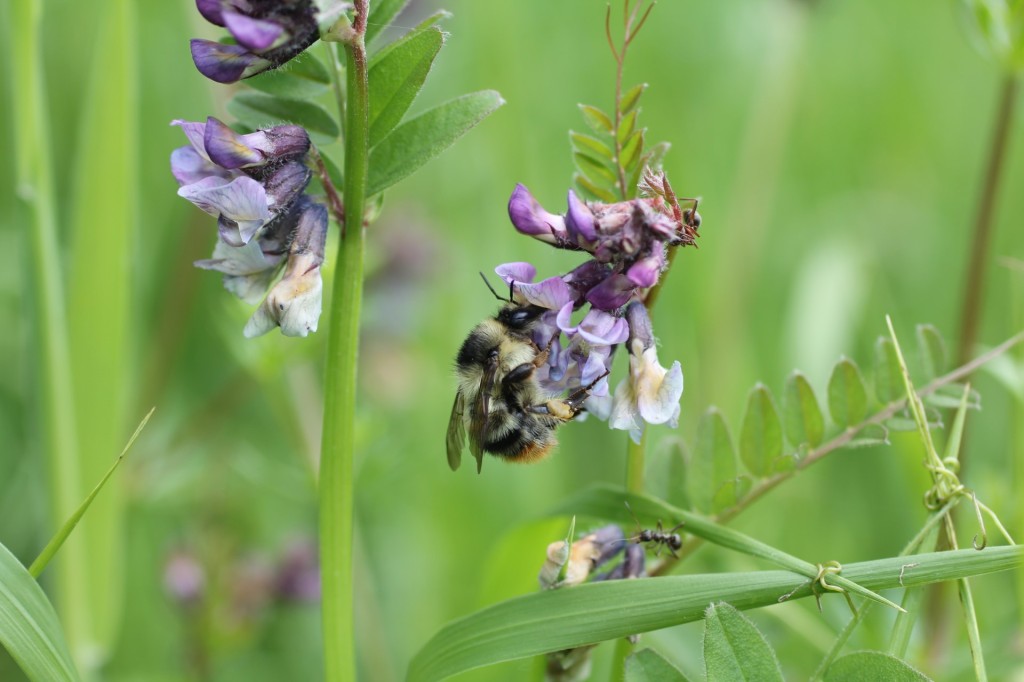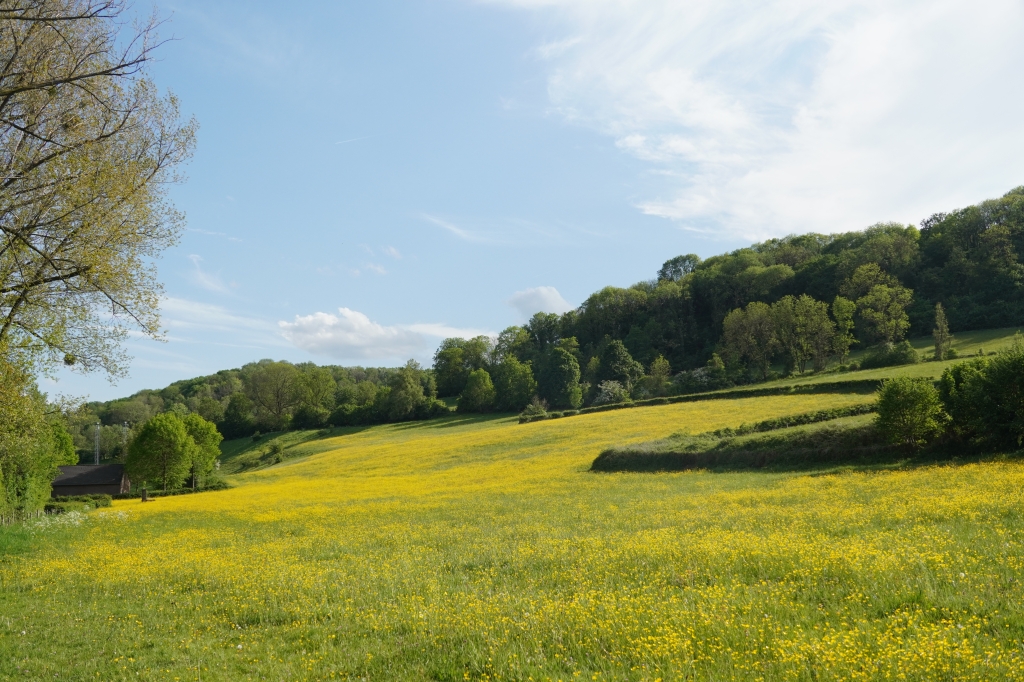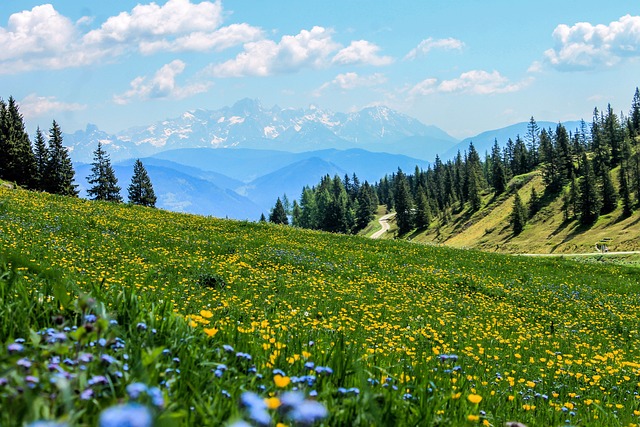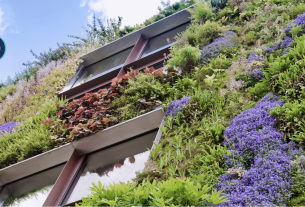|
Getting your Trinity Audio player ready...
|
Gabriella Bishop introduces us to the latest study, conducted alongside colleagues, which indicates that agri-environmental management should target the provision of summer floral resources for both social and solitary bees.
Bees in intensive agricultural landscapes
Bees need flowers for food and reproduction. Previously, agricultural areas contained small fields with undisturbed borders and flower-rich pastures that provided bees with the resources they need. The transition to large monocultures and frequent mowing of grasslands has left farmland with fewer flowers, which threatens bee populations.

Subsidy schemes have been put in place to make farming more environmentally friendly, for example by planting wildflower strips along field borders. We know that giving bees more flowers is beneficial, but when do they actually need them most?
The seasonality of bees and flowers
Through a multi-year bee monitoring and conservation project in the south of the Netherlands, we investigated how bee populations and the flowers they rely on change from spring to summer at the landscape scale. We wanted to identify low points in floral resources, and how the relationship between bees and flowers changes across the season. We also looked at if the flowers available in the previous year impact bee populations to understand across-year effects.
We found that in the mixed arable and pasture landscapes of our study area, flowers generally peaked in late spring and declined thereafter, with not much recovery in summer. Bees, on the other hand, only increased in number across the season. That means that when there are most bees, there are actually very few flowers available. We found that the relationship between bees and flowers became stronger across the season, meaning that bees are more limited by the flowers available later in the season.

Bee populations likely increase across the season because in temperate areas there are more species of bees that are late fliers (i.e., mid to late summer), and because bumblebees grow their colonies of worker bees across the season. By comparison, flowers were scarce after the main spring blooms – likely because of intensive agricultural management and the loss of natural habitats like calcareous grasslands.

In addition, we found that bumblebees in particular were slightly affected by the total amount of flowers available across the season, as well as by the flowers available in the previous year. This suggests that colonies need access to flowers across the entire season to be successful, and that reproduction is better in areas with more flowers year to year.
Recommendations
Our findings suggest that bees need more flowers in mid to late summer. But how might this be accomplished? While sowing wildflower strips may be beneficial, in reality they cover a very small proportion of the landscape, so larger areas should be targeted. However, this should be done without significant losses in agricultural production.

We think large, permanent forms of land use such as grasslands have the greatest potential to supply the most flowers consistently from spring to summer and from year to year. This could be accomplished by changing the management of grasslands, for example by reduced, delayed, or alternated mowing, or by incorporating legumes like clover and lucerne into grass mixes. These actions have the potential to boost the amount of summer flowers for bees, which could benefit their survival in agricultural landscapes.
Read the full article “Bees go up, flowers go down: Increased resource limitation from late spring to summer in agricultural landscapes” in Journal of Applied Ecology



